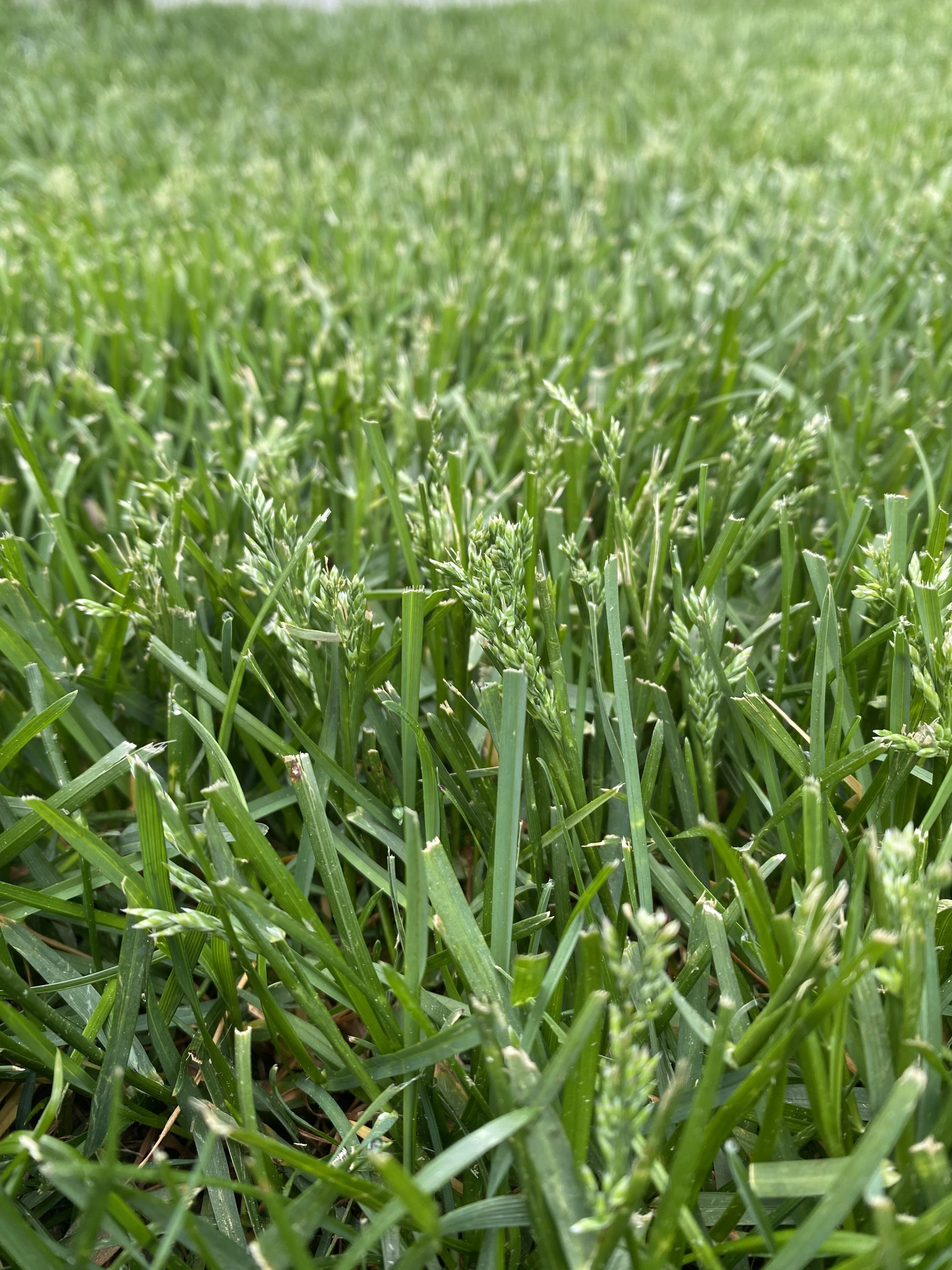During the middle to late spring, cool-season turfgrasses are in full swing. Soil temps are becoming perfect and outside air temperatures are warming up – your grass is dark green and is looking mint.
But you may now be asking yourself, “what are these grass seed heads popping up all over my yard?
In mid-to-late spring, cool-season grasses – Kentucky bluegrass, perennial ryegrass, and tall fescue – are all going to seed. This is called “stemming” and can be unsightly for some, but this is a natural process and happens every year.
Grass Seed Heads and Expending Energy
Like all plants, your grass wants to reproduce. During the spring, cool-season lawns will begin to use their energy and focus on going to seed. Your turfgrass is now using up a lot of its energy-producing and going to seed. Instead of using that food and energy into its roots and grass blades, it’s using that store fertilizer and energy into reproduction and generating seedheads.
Lighter Grass Color
As the cool season grass uses its energy-sprouting seeds, you’ll notice a change in your overall lawn color. For one, the grass seed heads have a much lighter hue than the actual grass blades. This can give a pale, hazy appearance.
The second reason for the lighter color is that – as previously mentioned – the grass seedhead production is expending most of its energy going to seed and trying to reproduce. This means it’s a great time to apply an application of nitrogen fertilizer to feed your lawn.
These seed heads can often be confused with Poa Annua. The timing for these cool-season grass types to go to seed is all in the same springtime window. However, Poa Annua (Annual Bluegrass) is a lighter green (lime green) color compared to your Kentucky bluegrass. Read more information about Poa Annua control here.
What To Do
- Frequent mowing
- Sharpen lawn mower blades
- Fertilize your lawn
- Include micronutrients
One of the best lawn care practices is frequent lawn mowing. Now, when your grass is going to seed, is no different and maybe even more important.
Adjust your mowing height. When you mow the seed heads off, the grass will begin to grow a harder, woodier stalk. This texture is noticeable, particularly when walking barefoot. As you continue to mow, your lawnmower blades will begin to dull much faster. So have a sharp backup blade ready to prevent ripping the grass blades – which will also help prevent lawn disease and fungus like brown patch.
Secondly, as previously mentioned, feed your lawn. A well-rounded nitrogen fertilizer like Carbon Phix is a great option as it contains 20% nitrogen, 12% potash, and 5% humic acid. You can also replenish a lot of micronutrients with Green Balance, and begin to prepare your lawn for the summer stresses with Summer Survival.

Grass Seed Heads FAQs
Should you let your grass go to seed?
Your lawn going to seed (or stemming) is a natural process. You should mow frequently, adjust your mowing height, and ensure your mower blades are sharp as woody stalks will begin to regrow. This time of year, in the spring, cool-season grasses will use up a lot of energy-producing seedheads, so make sure you feed your lawn a well-balanced fertilizer now.
Will these grass seed heads germinate?
No. The seeds that the cool-season grasses produce in the spring are sterile and will not germinate.
I hope this helps clear up some of your questions about why your grass is going to seed. Please leave a comment or question below.

This is great advice for dealing with grass going to seed. I’ve done some experimenting with letting grass seed in my lawn naturally and it just doesn’t work as well. I’d like to stick to those fundamentals of mowing watering fertilizing and overseeding. Thanks for putting this together
Hi, I live in Rockland county NY, I had a landscaper apply a contractors grass seed mix to my lawn, the first year the grass was beautiful but the 2 past years the grass has been thinning out, turning a yellowish and has a tremendous amount of thatch constantly, makes the lawn look like it’s dying, I’ve also noticed it has a lot of hard stalks and seed heads. I have started digging up the lawn and starting over, is there a good northeastern seed that doesn’t produce those hard stalks? and is there any way to rid my lawn of them now? thanks for any advice you can provide